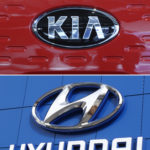Property/casualty insurers are expected to continue to handle costs for defective Chinese drywall claims in the normal course of business, according to a rating analyst with Moody’s Investors Service.
Losses from Chinese drywall will probably be covered within insurers earnings, rather than affecting capital, said Moody’s Investors Services analyst Enrico Leo in a new report. However, the ultimate cost to insurers won’t be known for awhile.
The potential liability for claims will reside with companies that have large geographic concentrations in Florida and/or Louisiana and large market positions in the manufacturer, supplier, contractor, and homeowners and condominium classes of business.
While any claims should be manageable, Leo said that property damage and litigation defense costs could be significant while bodily injury claims are more elusive right now and are dependent on further Consumer Product Safety Commission testing.
In his report, “Chinese Drywall Exposure Manageable for U.S. P&C Insurers,” Leo said future studies and court rulings will help to provide a clearer picture of insurers’ share of the total cost.
Consumers have reported noxious odors from the drywall, as well as corrosion of metal items inside the home and short-term health problems.
There have been a large number of lawsuits against drywall manufacturers, home builders, product installers, suppliers and distributors, but insurers’ payments related to Chinese drywall have been minimal, according to Moody’s.
Although it is early in the legal process, commercial insurers could face liability for property damage and potential claims under the products liability portion of the commercial general liability (CGL) policy. In terms of construction- defect liability, Moody’s Leo said he believes most insurers have modified their policies in order to address past construction defect claims, thereby reducing exposure to Chinese drywall liability.
Homeowners have filed many claims; however, personal insurers are generally denying coverage based on the standard pollution exclusion in the homeowners’ policy.
Some companies have already responded to the emerging issue by placing specific policy exclusions for Chinese drywall, while others have stopped offering coverage to contractors in certain geographic areas.
Leo said there are also companies that have not changed their underwriting guidelines because they believe that their exposures are manageable.
“Until industry and legislative tests and studies are completed, and until courts make some preliminary or precedent rulings, cost- estimate reliability will be limited,” the analyst said.
He expects the litigation process to be a long one in which insurers will incur considerable legal expenses to defend their insureds.
There are several cases now in the courts.
In one of these cases, the trustee for the WCI Chinese Drywall Trust has filed suit in January against 14 insurance companies in U.S. District Court, Eastern District of Louisiana. More than 700 homeowners may seek recovery through the trust.
Louisiana Attorney General Buddy Caldwell filed suit in Orleans Parish against German drywall manufacturer Knauf Gips KG entities, other international and domestic manufacturers, distributors, importers of alleged toxic Chinese drywall. Several builders were also named in the lawsuit. Caldwell’s lawsuit alleges the state has and will continue to suffer economic loss because of the defendants’ toxic Chinese drywall.
Last May, a group of Florida homeowners also sued Knauf, its Chinese plasterboard units and several U.S. home builders.
In Washington, U.S. Sens. Bill Nelson, D. -Fla., and Mary Landrieu, D. -La., have filed legislation for a recall and immediate ban on tainted building products from China.
Florida officials were recently denied federal disaster aid for homeowners whose real estate values have declined due to damage from defective drywall.
Was this article valuable?
Here are more articles you may enjoy.

 Allstate Insurers Sue Hyundai, Kia to Pay for Claims From Defective Cars
Allstate Insurers Sue Hyundai, Kia to Pay for Claims From Defective Cars  Blacks and Hispanics Pay More for Auto Insurance. Study Tries to Answer Why.
Blacks and Hispanics Pay More for Auto Insurance. Study Tries to Answer Why.  Swiss Re: Mitigating Flood Risk 10x More Cost Effective Than Rebuilding
Swiss Re: Mitigating Flood Risk 10x More Cost Effective Than Rebuilding  Trump Team Targets Auto Mileage Rules He Blasted as ‘EV Mandate’
Trump Team Targets Auto Mileage Rules He Blasted as ‘EV Mandate’ 